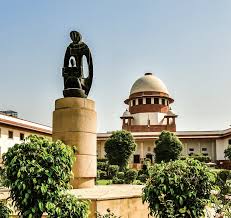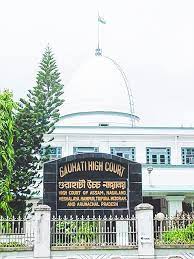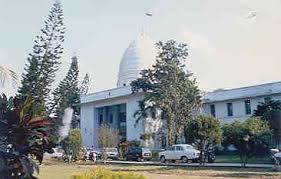High Court rejected the writ application filed by the appellants taking the view that the District Magistrate is competent to look into the legality and validity of the order passed by the Special Land Acquisition Officer (for short, ‘SLAO’) under Section 3G(5) of the National Highways Authority Act, 1956 (for short ‘the Act 1956’).
On 11.12.2019, the respondents herein raised a dispute regarding apportionment of the compensation between themselves and the appellants herein. With respect to the three parcels of land, the respondents claimed half share of compensation in Gat No. 158 and 1/3rd share of compensation in Gat Nos. 160 and 161 respectively, while the appellants herein claimed 5/8th share in the compensation in Gat No. 158 and 13/16th share in Gat Nos. 160 and 161 respectively.
The scheme of the Act 1956 and the statutory provisions referred to above makes it very clear that once any land is acquired under the Act 1956, the competent authority is obliged to pay an amount by way of compensation. There is a procedure which has been prescribed under Section 3G of the Act 1956. Sub-clause (5) of Section 3G makes it abundantly clear that if the amount determined by the competent authority under subsection (1) or subsection (2) of Section 3G is not acceptable to either of the parties, the amount will have to be determined by the arbitrator who may be appointed by the Central Government on the strength of an application by either of the parties. Section 3H provides that the amount determined towards compensation under Section 3G will have to be deposited by the Central Government in accordance with the rules. It is only after such amount is deposited by the competent authority that the possession of the land can be taken. Sub-clause (4) of Section 3H talks about apportionment of the amount. The language of sub-clause (4) of Section 3H is plain and simple. It provides that if any disputes arises as to the apportionment of the amount or any part thereof, the competent authority is obliged to refer the dispute to the decision of the Principal Civil Court of original jurisdiction within the limits of whose jurisdiction the land is situated.
In the case on hand, the High Court seems to have completely misread the provisions of the Act 1956. It fell into error as it failed to apply the well settled principle of law that for construing a legal provision, the first and foremost rule of construction is the literal construction. All that the Court has to see at the very outset is what does the provision state. If the provision is unambiguous and from the provision the legislative intent is clear, the Court need not call into aid the other rules of construction of statute. The other rules of construction are called into aid only when the legislative intent is not clear.
There is a fine distinction between determining the amount to be paid towards compensation and the apportionment of the amount. The legislature has thought fit to confer powers upon the Principal Civil Court of original jurisdiction to determine the dispute arising as to the apportionment of the amount. There is a reason, why the legislature has thought fit to confer such power to the Principal Civil Court of original jurisdiction within the limits of whose jurisdiction is land is situated. We shall try to explain hereinafter.
In such circumstance referred to above, the order passed by the District Magistrate, Mau dated 16.01.2020 is hereby quashed and set aside. The writ application No. 7310 of 2020 stands allowed. In view of the dispute between the parties as regards apportionment of the amount of compensation, the Special Land Acquisition Officer shall now refer the dispute to the Principal Civil Court of original jurisdiction in accordance with sub-clause (4) of Section 3H of the Act 1956.
SUPREME COURT JUDGMENT
Citation: 2023 STPL(WEB) 53 SC
VINOD KUMAR & ORS. Vs. DISTRICT MAGISTRATE MAU & ORS.
Civil appeal no. 5107 of 2022-Decided on 7-7-2023
Click to See Full Text of Judgment: 2023 STPL(WEB) 53 SC







